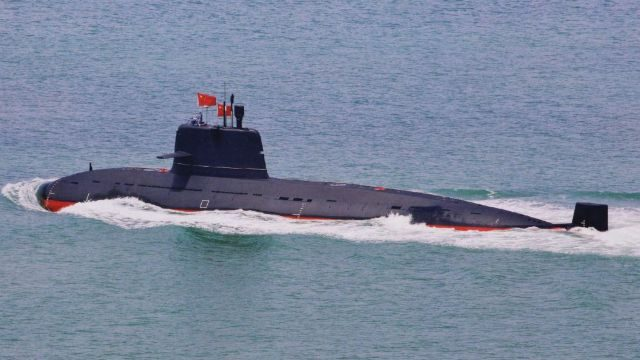





Disclaimer: Copyright infringement is not intended.
Context:
What is Hangor class submarine?
Basic characteristics of Hangor class submarine:
|
●“Diesel-electric” refers to the mode of propulsion where diesel engines power the submarine when surfaced or snorkelling (as they need air to operate), while a battery, charged by the diesel engine, allows the vessel to operate while submerged. ●Conventional diesel-electric submarines need to surface to recharge their batteries after a few days (2-5, depending on the battery used), making them detectable to enemy radar and exhaust fumes sensors. ●An AIP system can increase submarines’ underwater endurance manifold (upwards of 15-20 days). The Indian Navy is currently in the process of installing an indigenously developed AIP system to its Kalavari class submarines. |
Note: Attack submarines are specifically designed for sinking other submarines or surface vessels using torpedoes, or in modern times, cruise missiles.
Kalavari class vis-a-vis Hangor class
Difference:
Similarities:
Kalvari class submarine:
AIP modules:
Source:
|
PRACTICE QUESTION Q) Consider the following statements about the Hangor class submarine: 1. The Hangor class submarine is an export variant of the Chinese Type 039A Yuan class submarine. 2. It is equipped with an air independent propulsion (AIP) system, enhancing its endurance underwater. 3. The submarine is named after the PNS Hangor, which famously sank the Indian frigate INS Khukri during the 1971 war. 4. It has six 21-inch torpedo tubes and capabilities to launch anti-ship missiles, including the Babur-3 subsonic cruise missile with a range of 450 km. How many of the above statemetns is/are correct? A.Only one B.Only two C.Only three D.All four Answer: D Explanation: Statement 1 is correct: ●The Hangor class submarine is based on the Chinese Type 039A Yuan class submarine, serving as an export variant utilized by the Pakistan Navy. Statement 2 is correct: ●The Hangor class submarine features an air independent propulsion (AIP) system, which significantly increases its endurance underwater compared to traditional diesel-electric submarines. This allows the submarine to operate stealthily for extended periods without the need to surface frequently. Statement 3 is Correct: ●The Hangor class submarine is named after the PNS Hangor, a submarine of the Pakistan Navy that achieved success during the 1971 war for sinking the Indian frigate INS Khukri, showcasing the submarine's historical significance. Statement 4 is correct: ●The Hangor class submarine is equipped with six 21-inch torpedo tubes, allowing it to launch torpedoes against enemy vessels. Additionally, it has the capability to launch anti-ship missiles, including the Babur-3 subsonic cruise missile, which has a range of 450 kilometers. This armament provides the submarine with formidable offensive capabilities against both surface ships and land targets. |





© 2025 iasgyan. All right reserved